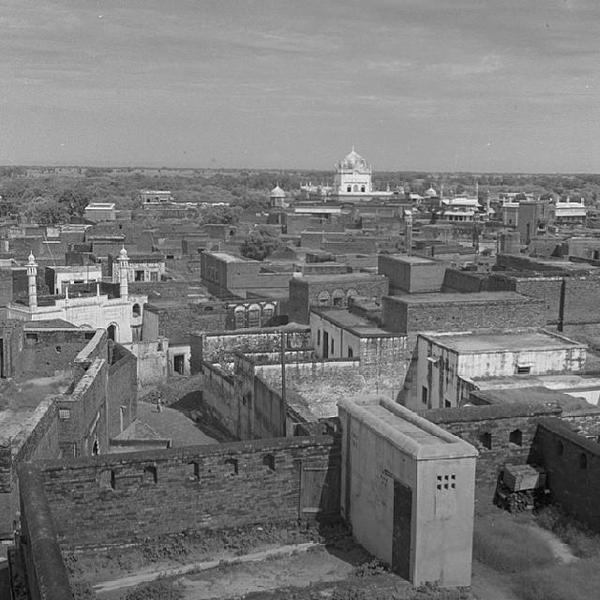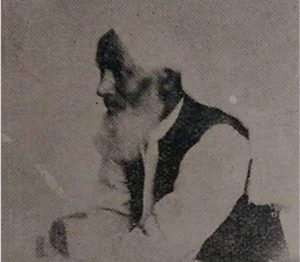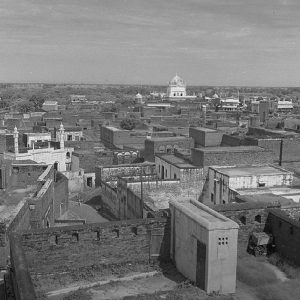What’s in a Name?
The Intentionality Behind Darul Qasim College’s Shaykh al-Hind Program
by Mawlana Shaheer Pathan
Darul Qasim College, the academic institution of Islamic higher education that you see before you today, was birthed through the vision and foresight of the college’s president, Shaykh Mohammed Amin Kholwadia. His methodological approach to the study of the Islamic Sciences in the North American context takes inspiration and barakah from one of the subcontinent’s most illustrious scholars, Mawlānā Maḥmūd Ḥasan, who was honored with the title “Shaykh al-Hind.” Shaykh Amin carefully points out the parallels that can be extracted from the story of Shaykh al-Hind’s divinely inspired title. Parallels that exist between the deep ‘ilm and pedagogical style of Shaykh al-Hind and what Shaykh Amin has built into the very fabric of the Darul Qasim that you see today. Perhaps, one of the most poignant parallels that can be drawn is that the honorary title of “Shaykh al-Hind” was conferred by Muslim and non-Muslim leaders alike, similarly, under the leadership and guidance of Shaykh Amin, the college’s faculty has designed a curricular and pedagogical approach that is expansive and inclusive of all those interested in studying the Islamic Sciences.
One of the many unique characteristics about Darul Qasim College’s curricular and pedagogical approach to the study of the Islamic Intellectual Tradition is the careful and systematic design of the programs and various tracks offered to students. Nothing is haphazard, not even the naming of programs. The Shaykh Al-Hind Program is perhaps one of the most compelling examples. We invite you to explore more parallels, as we share the story of how Mawlānā Maḥmūd Ḥasan was conferred the honorable title of “Shaykh al-Hind” in this blog post written by Mawlana Shaheer Pathan, Lecturer in the Department of Arabic at Darul Qasim College.
The title “Shaykh al-Hind” was accepted and seen to [manẓūr] in such a way in the court of [Independent, ṣamadiyyat] that the Angels, through Allah, created such a type of desire within the hearts of the people of India and greater India, that the entire Earth, [coming together at] one [time], came to experience intellectual [dhihnī] and spiritual [qalbī] satisfaction [sukūn] in mentioning [yād] him with the honorable title of “Shaykh al-Hind”. And, [his] primary name, in juxtaposition to this divinely inspired title chose [to be taken on] a secondary form.
-(a secondary source quoting Mufti Shafīʿ).
Shaykh al-Hind, Mawlānā Maḥmūd Ḥasan, was born in 1851, some years after the post-Mughal revolution. He was the son of Mawlānā Dhū al-Fiqār ʿAlī, one of the founding fathers of Dar al-ʿUlūm Deoband, who hailed from the ʿUthmānī Shuyūkh in lineage and was a student of Mawlānā Mamlūk ʿAlī, teacher and uncle of Mawlānā Qāsim Nānautvī. After completing his initial studies, Shaykh al-Hind enrolled in the newly founded Darul ʿUlūm at Deoband as one of the earliest students. Sometime around 1869, he began to study with Mawlānā Qāsim Nānautvi in what was the start to an intensely deep, academic and spiritual relationship. Mawlānā Qāsim would stay in Delhi where he worked as an editor for a local printing press and would occasionally travel to his hometown. He had the good fortune of learning from and serving his teacher throughout his travels such as these and, even, on the Ḥajj pilgrimage.
Shaykh al-Hind was appointed assistant lecturer while still a student, and, after graduation, became the fourth lecturer at the university, going on to teach at the university for decades. His deep ʿilm and pedagogical style attracted students from far beyond the borders of Hindustan, from distant lands such as Afghanistan, Iraq, Central Asia, and the Ḥijāz. In fact, the majority of the teachers at Dār al-ʿUlūm were his students.
Shaykh al-Hind lived during a time when not only India, but the whole of the Muslim world was unrelentingly wrought by internal uprisings and foreign occupation. This included the early twentieth century Italo-Turkish and Balkan wars. Shaykh al-Hind hand-crafted a plan that would help India rid itself of foreign rule: it was necessary to not only mount an armed insurrection, but foreign support would be necessary to quell the deeply entrenched British behemoth. For this, he met frequently, and discreetly, with close associates, even certain non-Muslims who were willing to help. These meetings would take place in the city of Deoband.
Shaykh al-Hind dispatched his student, Mawlānā ʿUbayd Allāh Sindhī, to Afghanistan: his mission was to secure the government’s support for Indian independence. Shaykh al-Hind, himself, would travel to the Ḥijāz where he would meet with the Turkish authorities and secure the Khalīfah’s support. He was successful in guaranteeing support should the Khilāfat be able and arranged for the letter to be distributed to the necessary bodies in Afghanistan through a covert, silk manufacture; hence the name “Silken Letters Movement.” However, he was apprehended and handed over to the British authorities by a treacherous governor. Shaykh al-Hind and his student Mawlānā Ḥusayn Aḥmad Madanī were then sent to the war-prison Island of Malta. Here they spent a number of years before they were eventually released and returned to India.
Upon return, Shaykh al-Hind was celebrated by all Muslims of all parties, scholars and laity, politicians and average citizens alike. In a lecture to the Darul Qasim faculty, ʿAllāmah Khalid Mahmood (Allah have mercy upon him) spoke about Shaykh al-Hind’s return to India. When landing in Mumbai, Shaykh al-Hind was welcomed as a hero by not only Muslim but non-Muslim leaders as well who represented the different religions of India such as the Sikh, Jain, and Hindu people. It was at this time that he was conferred the honorary title of “Shaykh al-Hind” by the Khilāfat Committee.
Mawlānā Ḥusayn Aḥmad Madanī states:
Ḥaḍrat’s noble arrival [tashrīf āwurī], participation in the Khilāfat Committee and support of them, the fervor of [national] freedom, and [him] risking [his] life, independently [doing all of this], and being genuine for the sake [of this cause]: all of these points were not such that they would not capture the hearts [of the people]. Accordingly, the hearts of the general Muslims, with utmost sincerity, bowed before [him]. And, generally, extreme love and acceptance became impressed upon [all] people. Accordingly, the leaders of the Khilāfat Committee chose for him the title “Shaykh al-Hind” which, in every corner and group, received [general] acceptance and it became as if it were part of [his given] name.
Although Shaykh al-Hind would leave this worldly life not too long after his return, he continued to work for the country with the newly-adopted “non-violent” approach. Despite his aging condition and ailing health, he penned the historic fatwā calling upon all Muslims of India to boycott the British and was appointed leader of the Jamʿiyyat al-ʿUlamāʾ whereupon he delivered an historic speech, and helped found Jamia Millia Islamia. All of these initiatives worked towards that one goal of independence. Shaykh al-Hind passed away in the year 1339/1920.
Enroll in the Shaykh al-Hind Program today: www.darulqasim.org/sah




